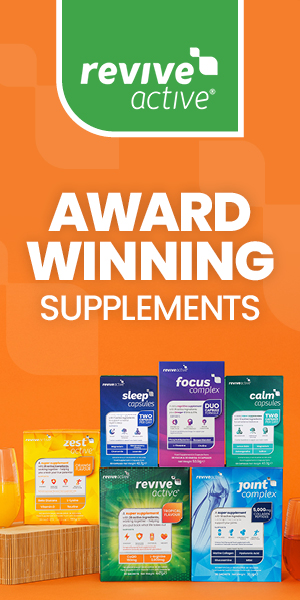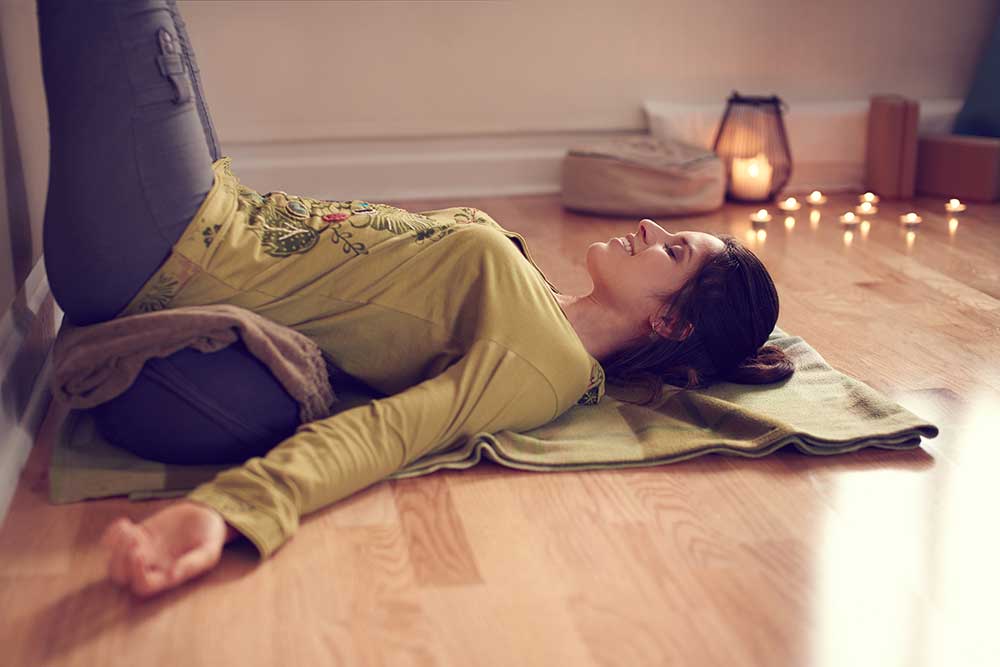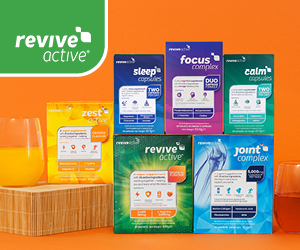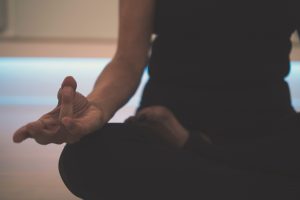The Healing Powers of Restorative Yoga
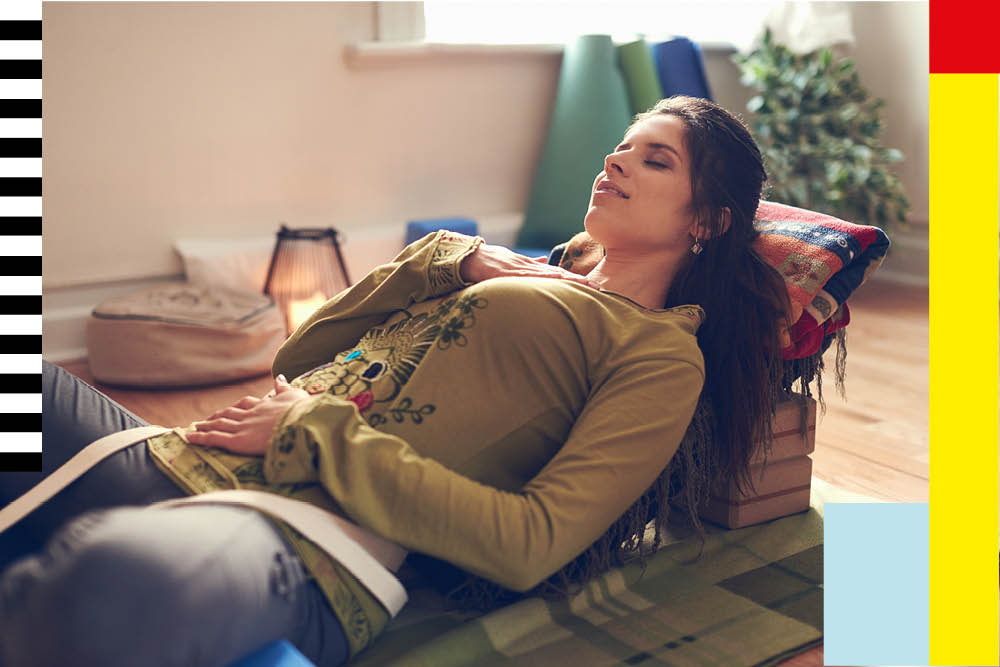
Taking a step back and slowing down when it might feel like you need to speed up and work even harder, is definitely a challenge for many of us (myself included), when it comes to several areas in life. However, both our body and mind need relaxation and rest in order to function properly; hence, it is crucial for us to make time for it in our daily lives and wellness routines.
But why do we need it? And how do we do it? My number one tip is restorative yoga. Let me explain why and how it helped me get through a very difficult time in my life.
RELAXATION OVER EXERTION
We often associate taking care of our bodies with sweat and hard work, and therefore tend to prioritise an intense cardio session or tough Pilates class when it’s time to work out. However, our bodies actually need relaxation in order for us to benefit from our workouts – it is essential for our muscles in order to get stronger and restore. Therefore, planning for time to unwind and allowing your body to rest is necessary for our well-being, for some people even more important than a heart-raising activity.
And it is not only our bodies that need rest – it is essential for our minds as well. Coping with the stress and all the to-dos most of us have in our busy lives definitely make it necessary to take a break from our sympathetic nervous system (the part of the nervous system that is responsible for the body’s “fight or flight” response) and help us to activate the parasympathetic nervous system (which controls the body’s “rest and digest” function).
SWITCHING OFF STRESS
However, although being able to switch from “fight or flight” mode to “rest and digest” is critical for our well-being, it is unfortunately often very difficult in today’s fast-paced society. The purpose of our bodies’ “fight or flight” response is to protect us from life-threatening danger, such as being chased by a bear. Unfortunately, our nervous system can’t tell the difference between a hungry bear or a swamped email inbox, so we tend to activate the sympathetic nervous system very often and during long periods of time, which results in harm on our bodies.
Chronic stress is disrupting the natural balance required for optimal health – it is speeding up the aging process and increasing the body’s susceptibility to disease. Being under constant stress increases our blood pressure, promotes a buildup of fat, increases our cortisol levels in our blood, etc., and essential processes, such as proper respiration and digestion, suffer when the sympathetic nervous system is activated. Therefore, finding ways to activate the parasympathetic nervous system and our relaxation response is vital for our health.
So, how do we turn off stress mode and enter a state of relaxation? For many of us, it can be quite rare for relaxing breaks and tranquil moments to occur naturally throughout the day, so it should definitely be something we put in our calendars. Scheduling time for rest is so important and an effective and lovely way to relax is through restorative yoga. I discovered it a few years ago and it has definitely changed my well-being drastically. Taking time to restore your body and being able to truly benefit from a more intense physical activity does wonders for both body and mind, and even though it is a passive form of exercise, I still experience that high and addictive feeling I also get from a run or Pilates class.
HEALING POWERS
Restorative yoga is a therapeutic and calm form of yoga, developed from Iyengar yoga, and its purpose is to heal the body from stress and disease, to truly relax and let the parasympathetic nervous system be activated. In contrast to yin yoga, you don’t even stretch in this type of yoga; restorative yoga is all about letting go and recharging your body. You rest in comfortable positions that balance and restore the body’s energy system. You use blocks, bolsters and blankets to create the optimal condition for the body’s muscles to get maximum relaxation, and you often stay quite long in each position – about 10-15 minutes, and up to 30 minutes.
Restorative yoga is an effective complement to other more intense forms of workouts, and although it might not be so much of a physical effort, reaching a state of deep relaxation can be harder than you think and is definitely a mental challenge. In addition to helping you unwind, restorative yoga also improves your sleep, can prevent stress symptoms, improves the body’s circulation, increases focus and presence, prevents injuries, strengthens the immune system and can have a healing effect. Moreover, it suits everybody and is very easy to do – even at home.
OPENING THE CHEST
Jonas Rådahl, one of Sweden’s most experienced and best yoga teachers with over 20 years of experience, began studying yoga in India in the 90s and has since then taught classes, organised workshops, worked at retreats, has held teacher trainings, and practiced in places such as Bali, Hong Kong and Canada. Jonas teaches several forms of yoga and has endorsed the health benefits and incredible effects of restorative yoga. “The feeling of being relaxed, both mentally and physically, and just letting all your thoughts and stress make some space for peace are what most people love about this type of yoga.”, says Jonas. “Not only does restorative yoga promote relaxation for our muscles, it also assists our joints to relax, which is hard to do without a very conscious relaxation or body scanning. However, restorative yoga makes that happen automatically.”
Jonas also claims that it is beneficial for everybody to unwind and restore our bodies. It is easy to do at home and just about 15 minutes is a great start according to Jonas: “A good position to try at home is to lay down on your back with a pillow under your chest to open up that area around your heart. Sitting down and working a lot in front of a computer nowadays, we are often very stiff around our chest, back and shoulders, and we should therefore definitely try to increase the blood circulation and release tension in those areas.”
That back and chest opening position is actually one of my favourite asanas in restorative yoga, and I am constantly amazed by the sensations I feel in my body from just laying down on a pillow or a block. I love to work out, especially to go for a run or do Pilates, as well as more intense types of yoga. I tried yoga for the first time when I was 14 years old and have been a fan of hot yoga and power vinyasa for a long time. However, my new favorite forms of yoga are actually yin yoga and restorative. I have personally experienced such amazing results and improvements on my overall well-being thanks to prioritising rest and recharge that especially restorative yoga allows me to do.”
FIRST-HAND EXPERIENCE
I experienced a trauma in my personal life three years ago, and what saved me and helped me back to normal life again was restorative yoga. For a long period of time, I barely had energy to get out of bed or see people, but when I eventually managed to leave my home, I went to the gym and just sat by myself in one of the yoga studios. At first, I didn’t feel strong enough to attend any teacher-led classes, so I went to the studio when it was empty and did whatever my body felt like doing. I listened to what it wanted and needed.
Some days it was laying down on my back covered in a blanket for a couple of hours, and other days it could be resting in child’s pose. After a few months, I started to attend classes again and what gave me the energy to actually do that was all the resting and the type of yoga I had been doing by myself. I didn’t know much about restorative yoga back then, so I wasn’t aware that it was restorative yoga that I was practicing on my own, but I have realised now that those positions my body was craving are common in this type of yoga.
THE MIND AND THE BODY
One of the worst parts with being that exhausted and broken down was not just the physical weakness I felt, it was also the mental. The stress of thinking of how everybody else around me was thriving in their careers, dating, going to fun events, seeing lots of people and simply just living their lives like a 20-something-person should be doing. But I didn’t have energy to do anything remotely close to that at that point. My life had drastically changed and I had no clue about what the future would hold for me. I had no energy, no plan, no inspiration. I had hit rock bottom and although I still had my family and friends, it felt like I had to rebuild my life from scratch.
That was stressful and tough to think of, especially when I had fought so hard during the past years to get the life I had dreamed of for so long. However, what I repeated to myself when I was sitting all alone in that yoga studio was the mantra “I speed up by slowing down”, and that helped calm and comfort my stressed and restless mind. I somehow knew that giving myself the rest my body needed was essential in order for me to recover and eventually continue living my life the way I wished to. I had a feeling that the more I rested, the quicker the recovery, and now looking back at this period and experience, I am fascinated by how I was fully back on track again only about five months later.
That pause in my life taught me many things and gave me new insights, one of which being the importance of rest. My respect for what relaxation can do with our bodies was taken to a whole new level and I think that for the first time I understood how essential it is for us to unwind and actually make that a priority in our lives. Prior to this time in my life, I used to push myself a lot and wasn’t aware of the health benefits of rest, let alone made time for it in my busy schedule. And that is actually the truth and the tricky part about rest and relaxation – the busier you are, the more you need it. Therefore, a new fundamental and favorite part in my wellness routine is to make room for it. A lot of room. If I don’t go to one of Jonas’ yoga classes in the evening, I often roll out my own mat at home and lay down with a blanket, a pillow and my favorite mantra in my head; “I speed up by slowing down”.

Also a skilled writer about travel, she has been a contributor for Vogue – with many of her articles making it onto the list of Vogue’s most-read travel articles during the year they were published. Matilde loves running, chocolate and dogs, dreams
of living in Cape Town in the future, and hopes to write a book one day.



